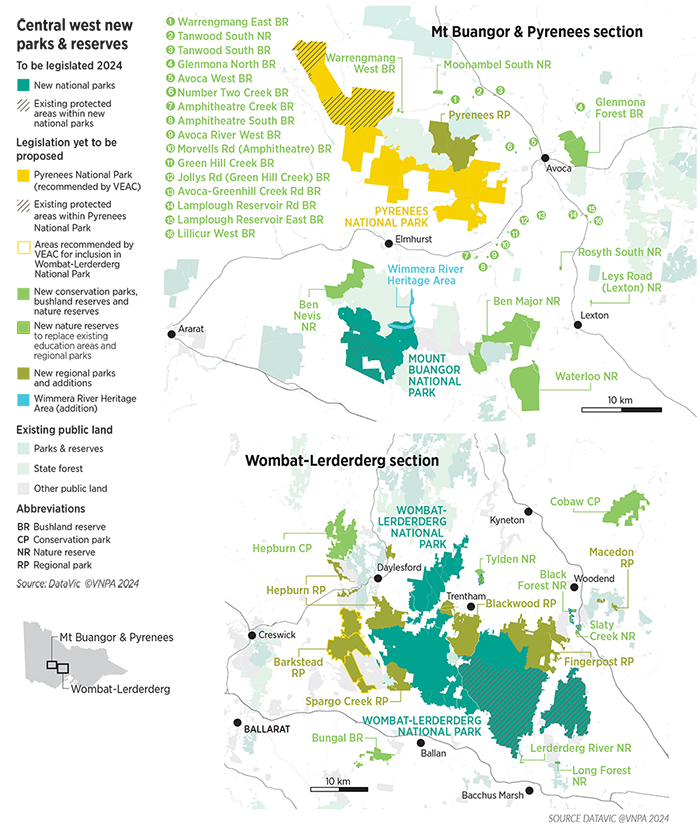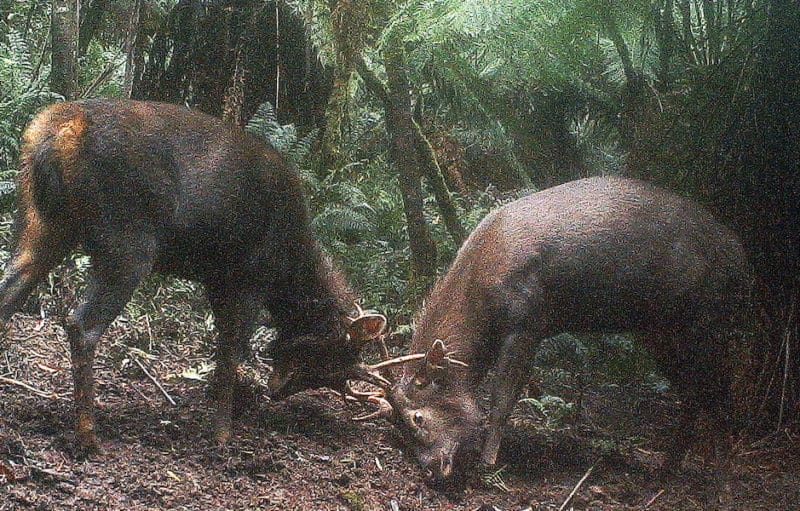PARK WATCH Article September 2024 |
There’s good (and not so good) news for the promised central west national parks
We’ve lost count of the articles written, meetings held and emails sent in the last seven years on the long-overdue creation of protected areas in the central west. But, after years of procrastination and inertia, a glimmer of hope has emerged.
Earlier this year, correspondence from the Premier’s office to conservation groups noted that:
…the legislation to create the first two national parks, Wombat-Lerderderg National Park and Mount Buangor National Park is planned for introduction into parliament later in 2024.
So far, it’s taken three times longer for these parks to progress from commitment to legislation than any other new national park in the past 25 years. And that’s only one part of the promised package!
The first round of legislation includes 45,000 ha of Wombat Forest – a hotspot for threatened wildlife including Greater Gliders, Mountain Skinks and Brush-tailed Phascogales.
An area of 24,000 ha was slated to be added to the existing Lerderderg State Park to form the larger Wombat-Lerderderg National Park and will likely include some form of joint management with Traditional Owners.
The proposed Mt Buangor National Park will also integrate existing protected areas, adding only 2,832 ha from Mt Cole State Forest (home of Critically Endangered Mt Cole Grevillea) to the existing 2,450 ha Buangor State Park. This addition represents a mere 16 per cent of Mt Cole State Forest.
Lost in the woods
We understand this piece of legislation won’t encompass every regional and conservation park initially committed to. Very recent correspondence from the government to local groups indicating the development of a second piece of legislation ‘as soon practicable thereafter’ is welcome progress.
National parks aren’t the only type of protected area in Victoria; conservation parks, nature reserves and bushland reserves are all counted as their primary purpose is for conservation.
Regional parks aren’t considered formal protected areas, as they allow for multiple uses and broader range of recreational activities. However, they do protect places from large-scale commercial habitat logging.
Legislating only new national parks at Wombat Forest and Mt Buangor will miss about half (around 26,275 ha) of promised protected areas including:
- A Pyrenees National Park, adding 10,683 ha to the existing nature reserve (443 ha), to create the new 15,000 ha national park.
- Two conservation parks at Hepburn and Cobaw, adding some 5246 ha.
- A network of ten nature reserves and over 40 small bushland reserves, adding around 6029 ha.
Many of the proposed regional parks don’t reflect the Victorian Environmental Assessment Council’s (VEAC) expert recommendations. VEAC recommended Wellsford Regional Park become part of Greater Bendigo National Park. Instead, the then Andrews Government downgraded this rare Box-Ironbark Forest, despite dedicated decades of work by local conservation groups.
While the forest’s big trees, Regent Honeyeaters, Barking Owls and Lace Monitors won’t receive proper protection, commercial logging will at least come to an end.
Large areas of regional parks were also added by the government around the Wombat Forest but were not originally recommended by VEAC.
The second phase of legislation must include a significant number of regional parks (24,764 ha) including:
- Wellsford Forest addition to the Bendigo Regional Park (3950 ha)
- Pyrenees Regional Park (2016 ha)
- Barkstead Regional Park (4855 ha)
- Blackwood Regional Park (3707 ha)
- Spargo Ck Regional Park (1693 ha)
- Fingerpost Regional Park (5442 ha)
- Addition to Macedon Regional Park (154 ha) and Hepburn Regional Park (2947 ha).
Unless the rest of the central west parks are legislated, the remaining areas, intended to become regional and conservation parks, will stay state forests. This leaves them vulnerable to mining and logging.
The Victorian Government has yet to give a clear timeline for the creation of the promised bushland and nature reserves or regional and conservation parks. For the sake of our wildlife, communities and climate, we hope ‘as soon as practicable’ means early in 2025. It’s beyond time to stop procrastinating and start celebrating our new national parks.
- Read the latest full edition of Park Watch magazine
- Subscribe to keep up-to-date about this and other nature issues in Victoria
- Become a member to receive Park Watch magazine in print

